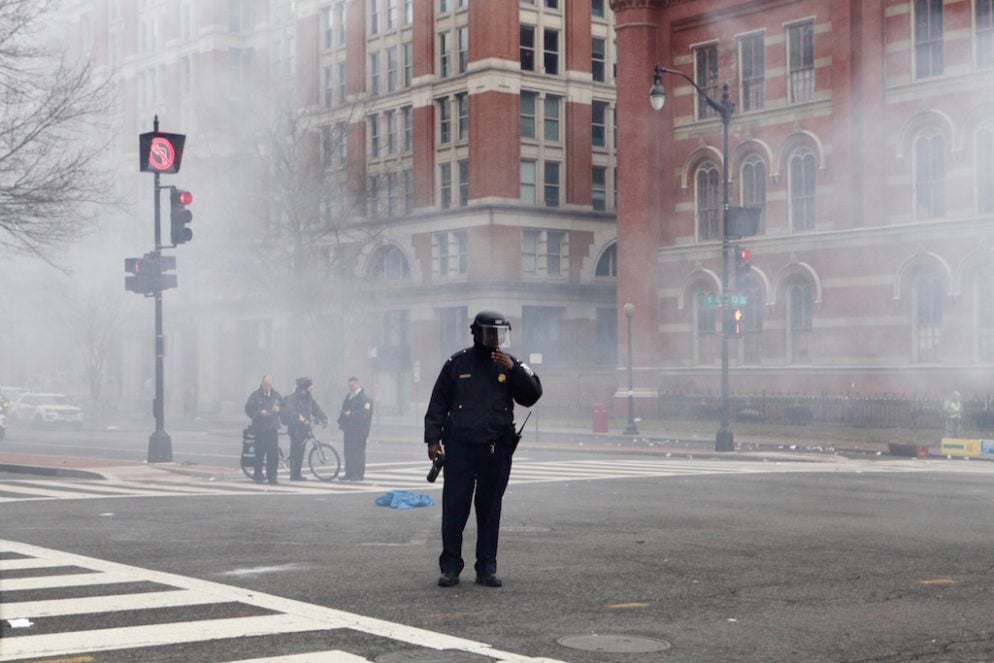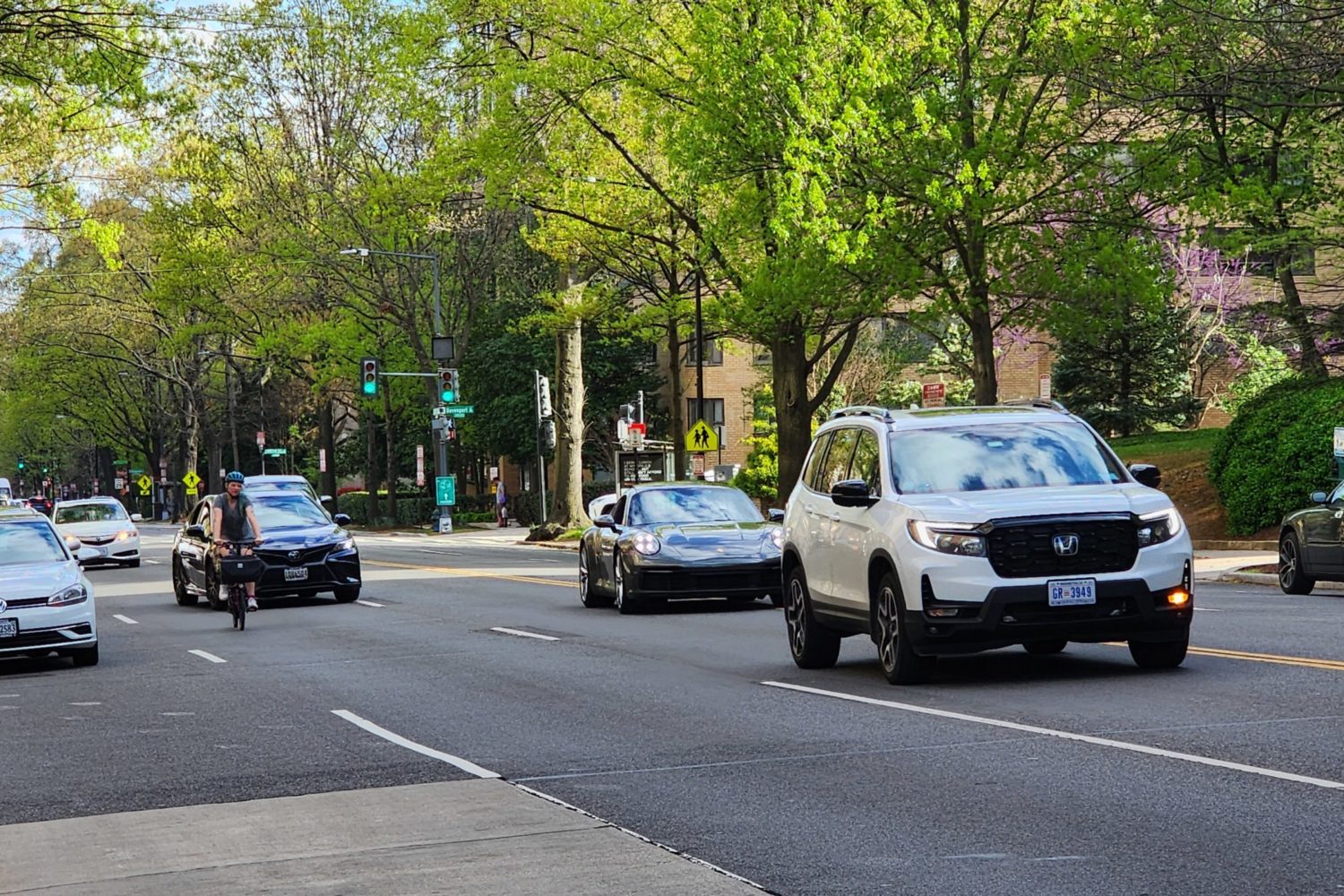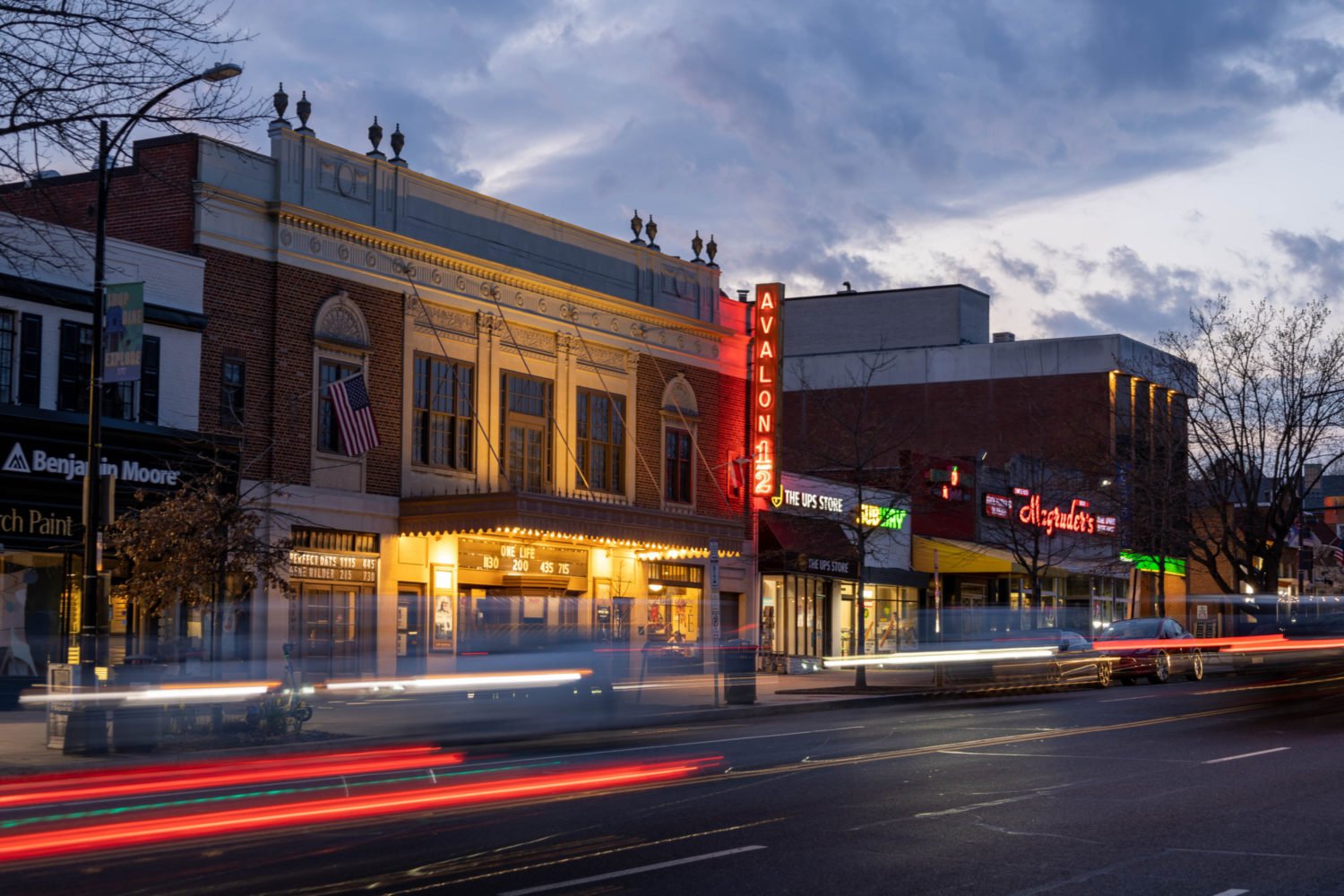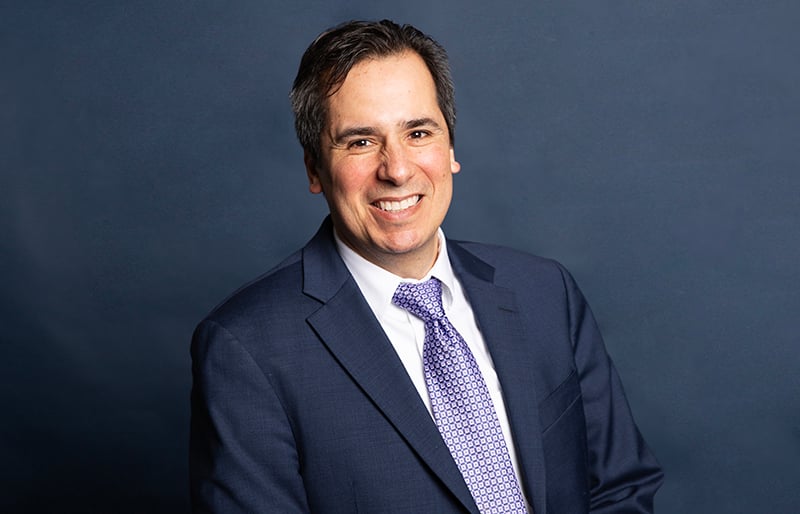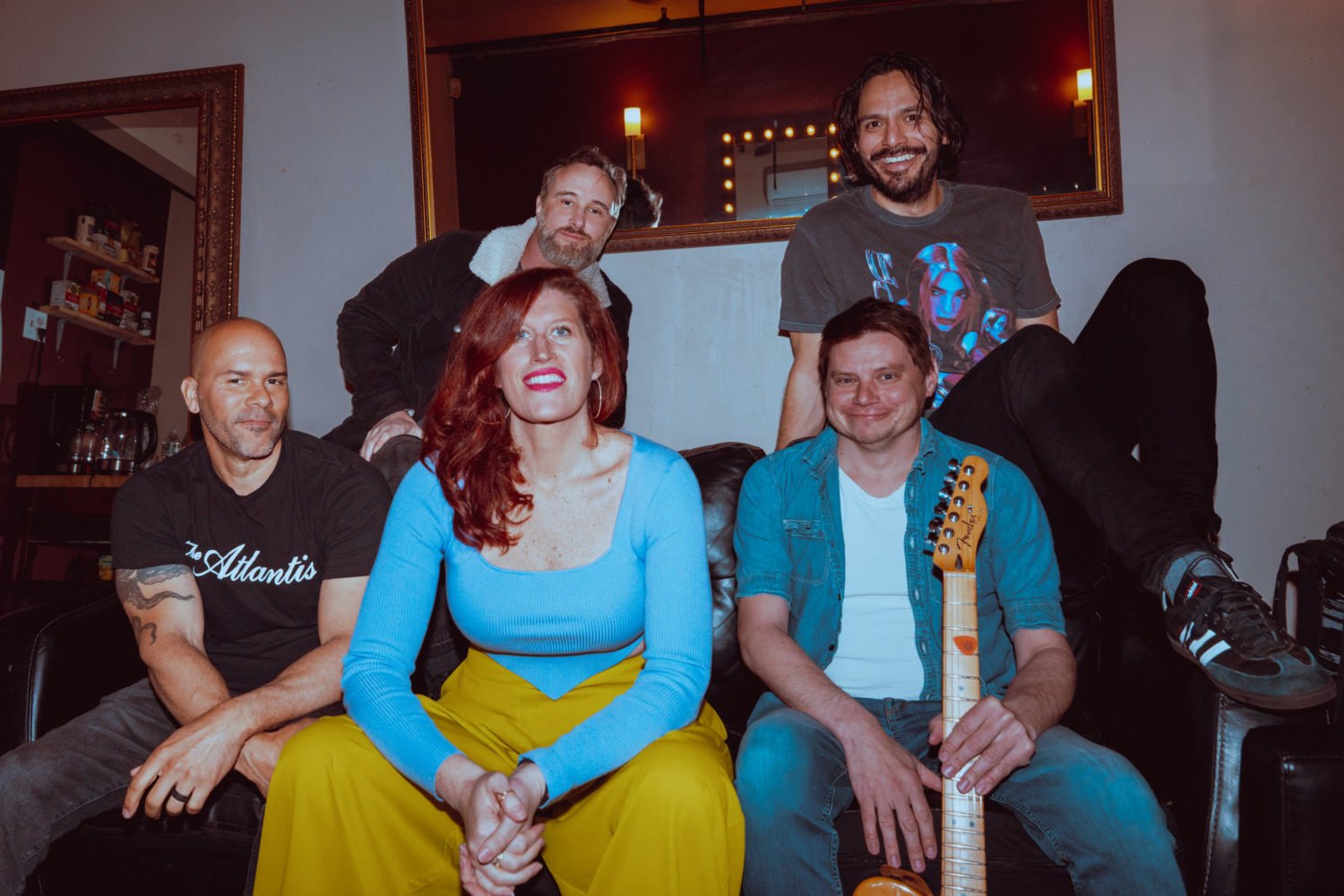A federal prosecutor presented jurors with the evidence against Britne Lawson: a shiny white helmet with red duct tape on it in the shape of a cross, and a fanny pack with first aid supplies like bandages, medical gloves, granola bars, and tampons.
DC police found these items in her possession when she was arrested along with 233 others during an anti-fascist, anti-capitalist protest on Inauguration Day 2017.
Lawson is one of six defendants in the first of more than 20 trials scheduled over the course of the next year. That’s because nearly 200 people still face felony charges related to the destruction in downtown DC on January 20. The five felony counts of property destruction are for smashed windows at two separate Starbucks, a Bank of America, the Atrium Cafe, and a McDonald’s. (Judge Lynn Leibovitz dismissed the sixth felony count, inciting a riot, on Wednesday morning.)
Surely, it doesn’t take that many people to break five windows. (One person pleaded guilty to breaking the window between Bank of America and Starbucks in April and was sentenced to three months behind bars. He’s already out.) Assistant US Attorney Jennifer Kerkhoff, the lead prosecutor on the case, has admitted she doesn’t have proof that the current defendants smashed the glass in question.
Instead, Kerkhoff has argued that everyone in the group should be held responsible, because they didn’t leave the protest when they saw other participants lighting garbage cans on fire or tagging walls with graffiti. The attorney’s office attempted to indict nearly everyone arrested that day with eight felonies, two of which Judge Leibovitz ruled before trial were actually in the DC Code as misdemeanors
Most of Kerkhoff’s case, which rested Tuesday, consisted of proving that the defendants were present somewhere along the march that went from Logan Circle toward Franklin Square.
Civil rights groups like the ACLU say the case is “criminalizing dissent” and will have a chilling effect on people’s ability to protest. (The ACLU of DC is also suing DC police and the city for its conduct that day, alleging unconstitutional arrests, excessive force, and indiscriminate use of nonlethal weapons.)
One of this trial’s defendants, Alexei Wood, who livestreamed the entire event, says he came to DC as a journalist. His defense attorney, Brett Cohen, showed the jury emails Wood had sent to various editors about covering Inauguration for them.
But what about Lawson? She doesn’t claim to be a journalist, but all of the evidence collected suggests that she, along with 26-year-old defendant Michelle Macchio, is a “street medic”–someone who attends a protest to provide medical assistance to participants. That definition applies to a third of the defendants in this first trial.
Kerkhoff has suggested in court that even having first-aid equipment like gauze is a tacit admission that protesters planned to commit acts of violence.
This argument isn’t new. Chicago Mayor Richard Daley made a similar case after facing criticism for police brutality during the 1968 Democratic Convention. He likened anti-war demonstrators to terrorists who “came here equipped with caustics, with helmets, and with their own brigade of medics.”
Lawson and Macchio declined to speak with Washingtonian during the trial. But Ryan, a street medic from the West Coast who came to DC to watch the trial, gave some insight into the role. He asked that we not use his last name, because alt-right organizers often publish personal information about public leftists online.
Having a few Band-Aids in your backpack is not enough to be a street medic, says Ryan. The role, which traces its roots back to the Civil Rights Movement, requires 20 hours of training that covers life-saving care, decisions about when to contact EMS and when to treat patients on-site, and providing what Ryan calls “consent-focused” care, meaning that patients are actively involved in decisions about their treatment.
There isn’t one umbrella organization that offers credentials, though a slew of regional groups exist, so there aren’t any reliable figures on how many people volunteer as street medics at events like protests and longer-term demonstration camps like Standing Rock, as well as during natural disasters.
“We are out here to provide care for people who can’t access corporate medicine,” says Ryan, who’s been a street medic for a decade and is currently in his 30s. He says that they follow medical codes like “Do No Harm” in addition to street medic ethics.
“We are tactically neutral, but we are not politically neutral,” he says. Tactically neutral means that protesters who have a cut and are standing near broken glass are just as deserving of medical care as those who twist their ankles stepping off a curb, for instance. (It is this facet of street medic ethics that have led Kerkhoff to accuse medics of “aiding and abetting” crimes.)
That doesn’t mean Ryan will treat everyone at a demonstration. “Someone working for liberation and someone who is a Neo-Nazi are not the same,” he says.
But for the most part, being a street medic is “a lot of walking around for a long time handing out water and sunscreen” as part of a buddy pair, Ryan says, or reminding people to keep moving when it’s cold out to avoid hypothermia. “There’s a lot of prevention that goes on. That’s probably most of the work we do.”
Lawson’s defense attorney, Sara Kropf, showed a video of a person wearing a white helmet and fanny pack identical to those presented as evidence against her client. In the video, the person is using a water bottle to help treat a protester dealing with the effects of tear gas.
Lawson and Macchio are both healthcare professionals who’ve had to leave their nursing jobs to be present in DC for the trial. Now that both the prosecution and defense have rested, the case could go to the jury as soon as Friday. At least one defendant in the next trial, which has a status hearing on Friday, identifies as a street medic.
Before the defense rested on Tuesday afternoon, Kropf called a witness for Lawson—Valerie Hess, the supervisor on the oncology unit at University of Pittsburgh Medical Center, who had been Lawson’s boss.
Hess told the jury that Lawson “can respond to aggressive patients calmly” and she had never known her to be violent, even in stressful situations.
During her cross examination, Kerkhoff asked Hess if she had seen the footage of windows breaking on Inauguration Day, and if learning that Lawson was a part of that group would change her opinion of her former employee as a nonviolent person.
“To me, the question is whether or not she had personal responsibility,” Hess said.
Kerkhoff said it was a yes or no question.
“No,” Hess replied. “I don’t believe it is.”

